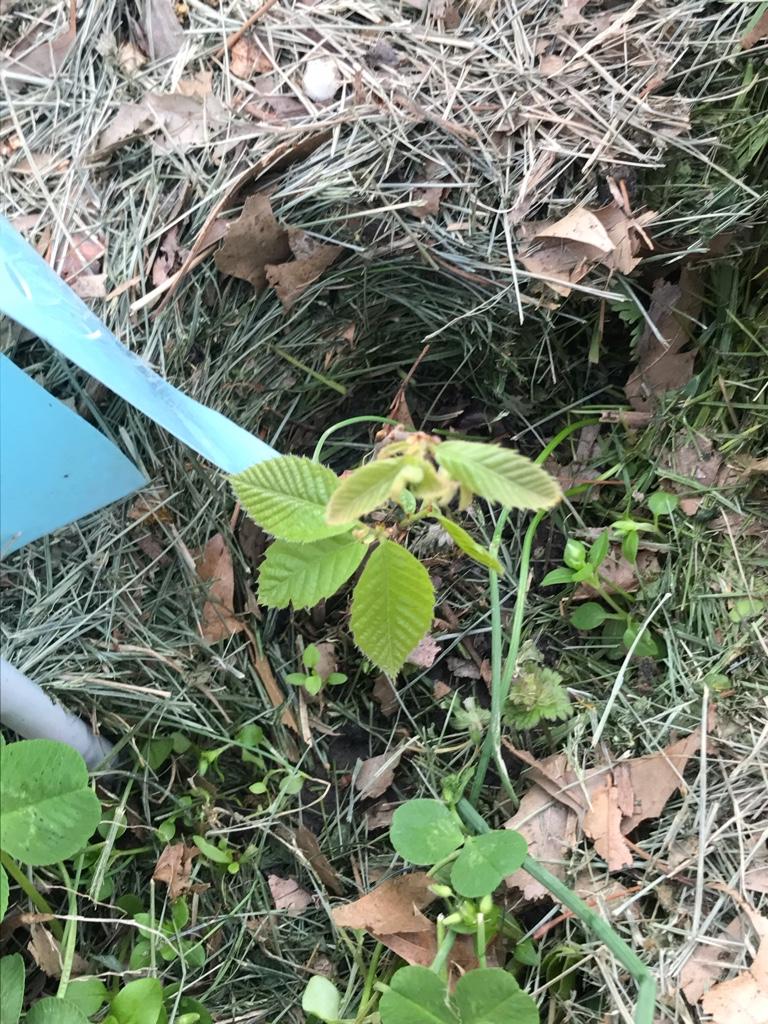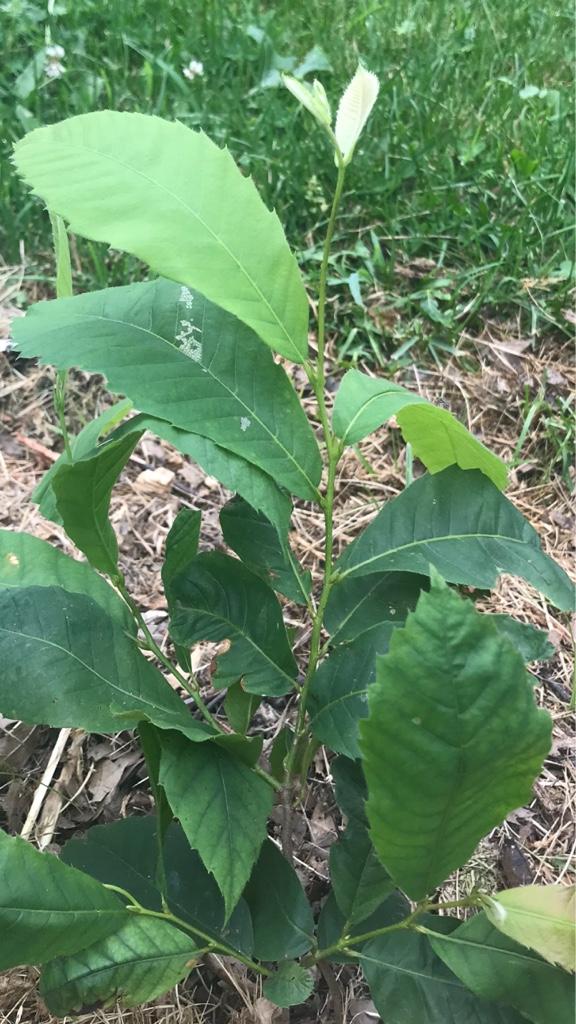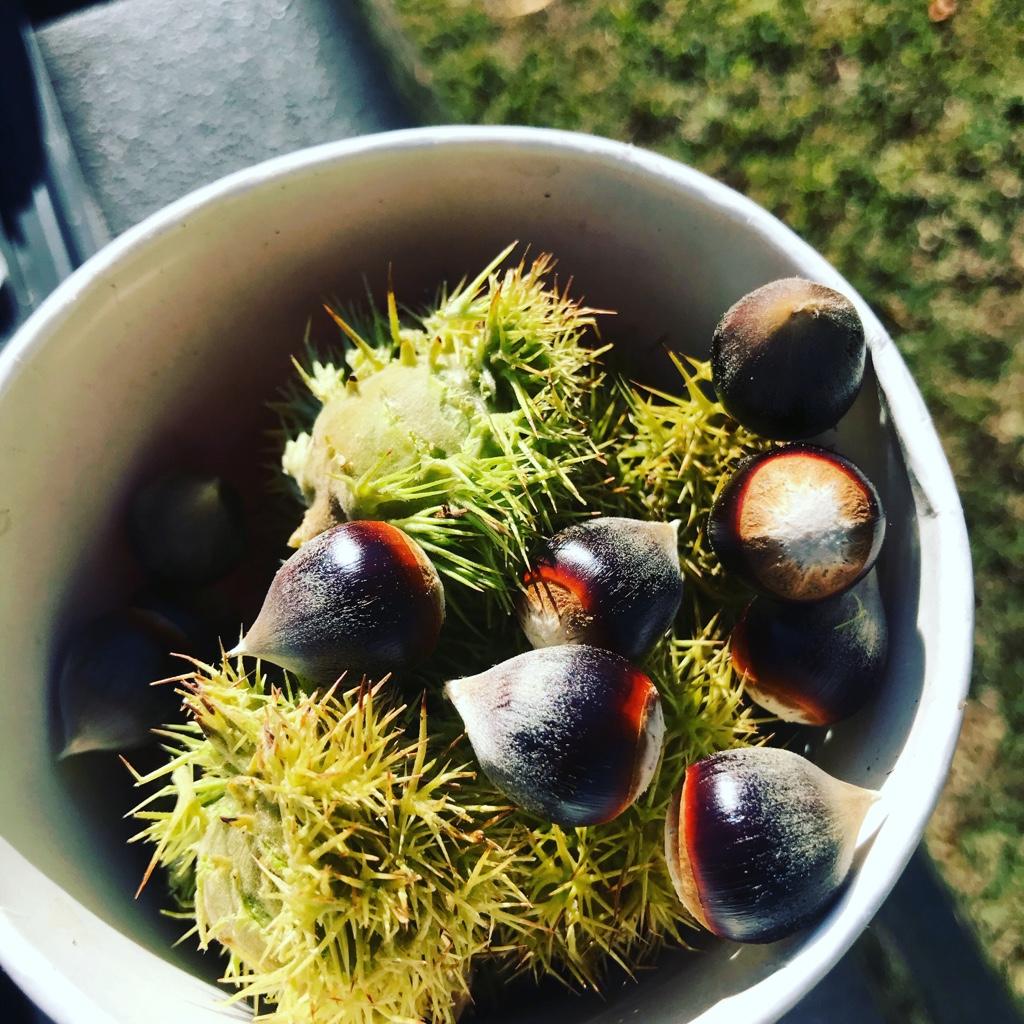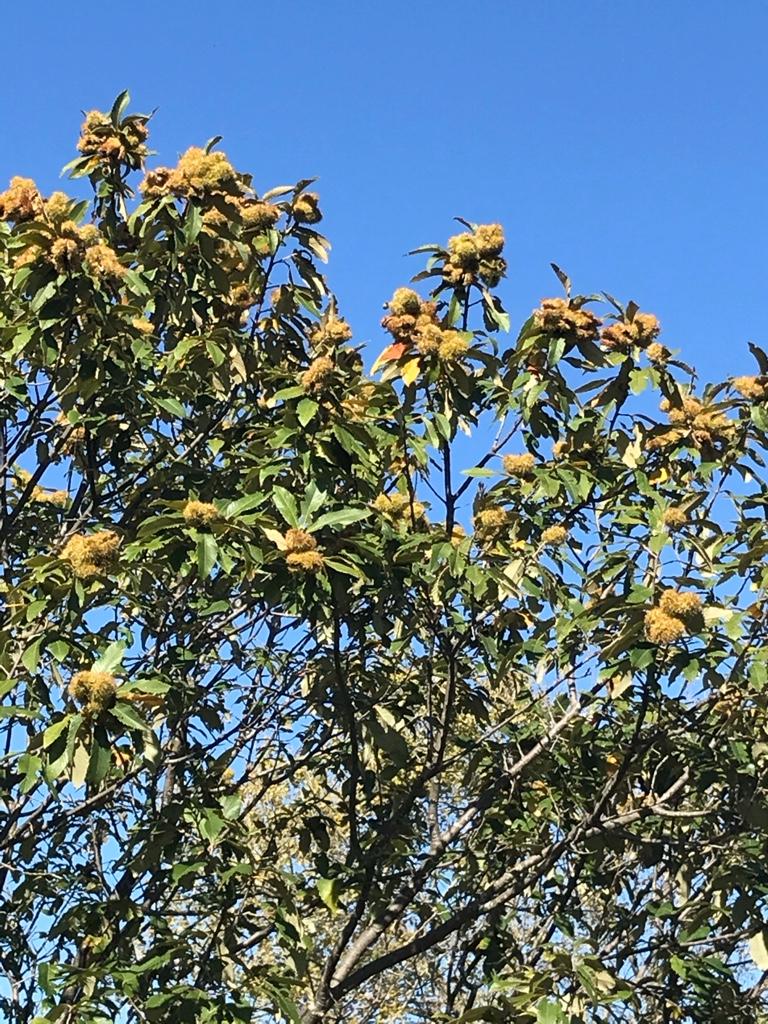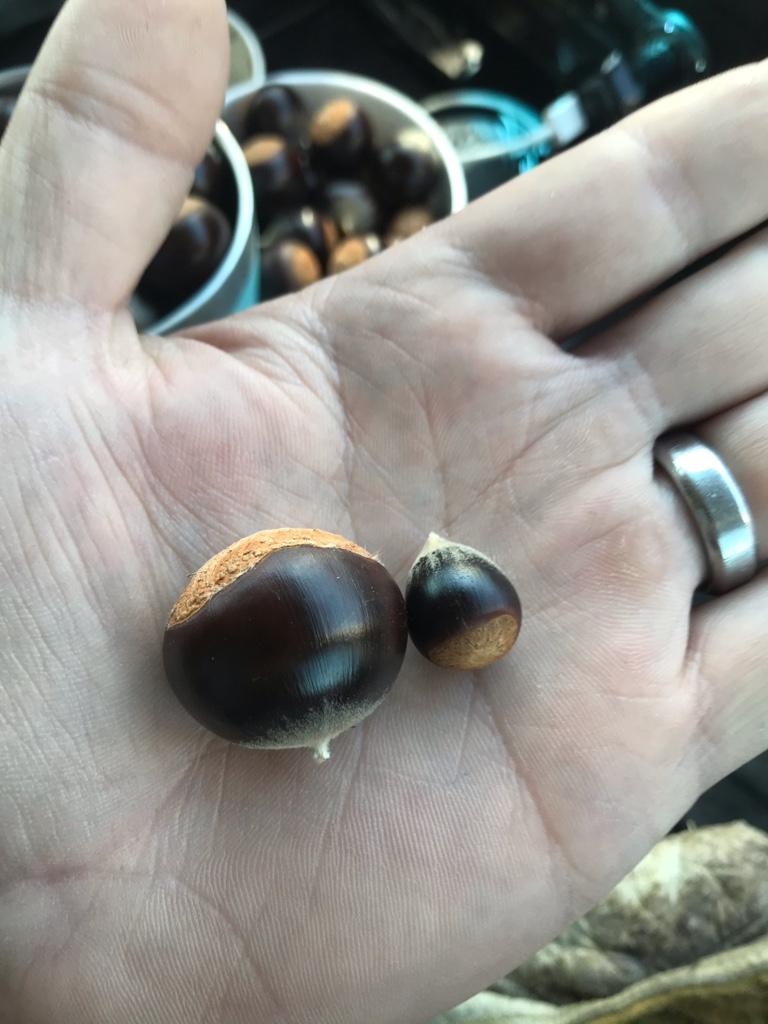Personally, I think that even though they are related, Chinquapins and chestnuts are fundamentally different. Chinquapins, at least in my area tend to form a bush with many branches and produce nuts when they are only a few years old. Some do take tree form, but all produce nuts at an early age. The American chestnut use to be a dominant tree in the eastern forest. They are like our oak trees in that they don't produce nuts until they are 20 years old or so. I think they are adapted to take that long so they have time to reach forest canopy height. Chinquapins seem to fill a different niche. I find them along roads and field edges and such most often. They seem to fill a void earlier in succession than oaks or chestnuts.
I find that chestnuts respond to injury by producing root suckers. That makes them difficult to graft for me. Not only do you need to get the alignment just right,, they want to put their energy into producing root sprouts rather than pushing the graft. I think they tend to respond to injury from blight this way as well. I think if clearing around an American chestnut would cause it to recover and produce nuts, the ACF would have long ago found this.
Thanks,
Jack
